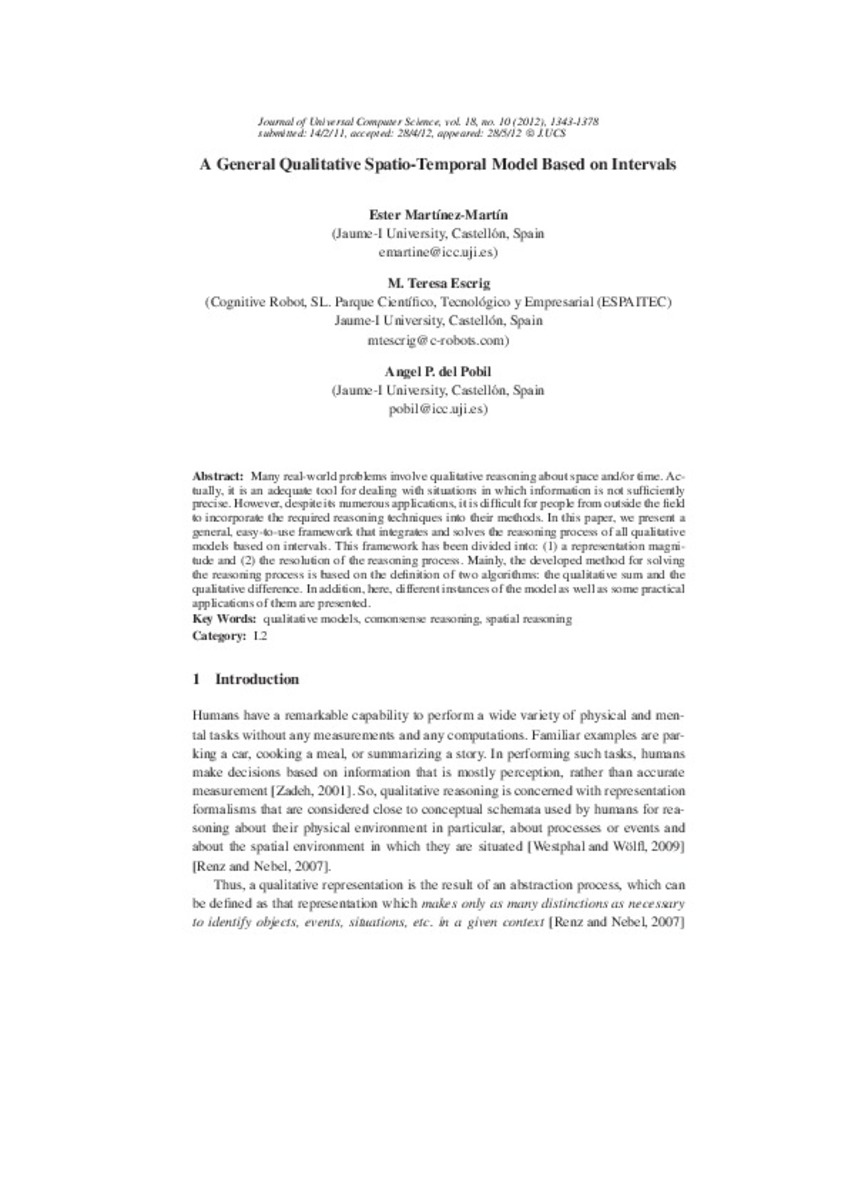Mostrar el registro sencillo del ítem
A General Qualitative Spatio-Temporal Model Based on Intervals
| dc.contributor.author | Martínez Martín, Ester | |
| dc.contributor.author | Escrig Monferrer, María Teresa | |
| dc.contributor.author | del Pobil, Angel P. | |
| dc.date.accessioned | 2013-05-07T15:39:52Z | |
| dc.date.available | 2013-05-07T15:39:52Z | |
| dc.date.issued | 2012 | |
| dc.identifier.issn | 0948-695x | |
| dc.identifier.uri | http://hdl.handle.net/10234/62691 | |
| dc.description.abstract | Many real-world problems involve qualitative reasoning about space and/or time. Actually, it is an adequate tool for dealing with situations in which information is not sufficiently precise. However, despite its numerous applications, it is difficult for people from outside the field to incorporate the required reasoning techniques into their methods. In this paper, we present a general, easy-to-use framework that integrates and solves the reasoning process of all qualitative models based on intervals. This framework has been divided into: (1) a representation magnitude and (2) the resolution of the reasoning process. Mainly, the developed method for solving the reasoning process is based on the definition of two algorithms: the qualitative sum and the qualitative difference. In addition, here, different instances of the model as well as some practical applications of them are presented. | ca_CA |
| dc.format.extent | 36 p. | ca_CA |
| dc.format.mimetype | application/pdf | ca_CA |
| dc.language.iso | eng | ca_CA |
| dc.publisher | J.UCS | ca_CA |
| dc.relation.isPartOf | Journal of Universal Computer Science, vol. 18, no. 10, p. 1343-1378 | ca_CA |
| dc.rights | © J.UCS | ca_CA |
| dc.rights.uri | http://rightsstatements.org/vocab/InC/1.0/ | * |
| dc.subject | comonsense reasoning | ca_CA |
| dc.subject | qualitative models | ca_CA |
| dc.subject | spatial reasoning | ca_CA |
| dc.title | A General Qualitative Spatio-Temporal Model Based on Intervals | ca_CA |
| dc.type | info:eu-repo/semantics/article | ca_CA |
| dc.identifier.doi | http://dx.doi.org/10.3217/jucs-018-10-1343 | |
| dc.rights.accessRights | info:eu-repo/semantics/openAccess | ca_CA |
| dc.relation.publisherVersion | http://www.jucs.org/jucs_18_10/a_general_qualitative_spatio | ca_CA |
Ficheros en el ítem
Este ítem aparece en la(s) siguiente(s) colección(ones)
-
ICC_Articles [413]







